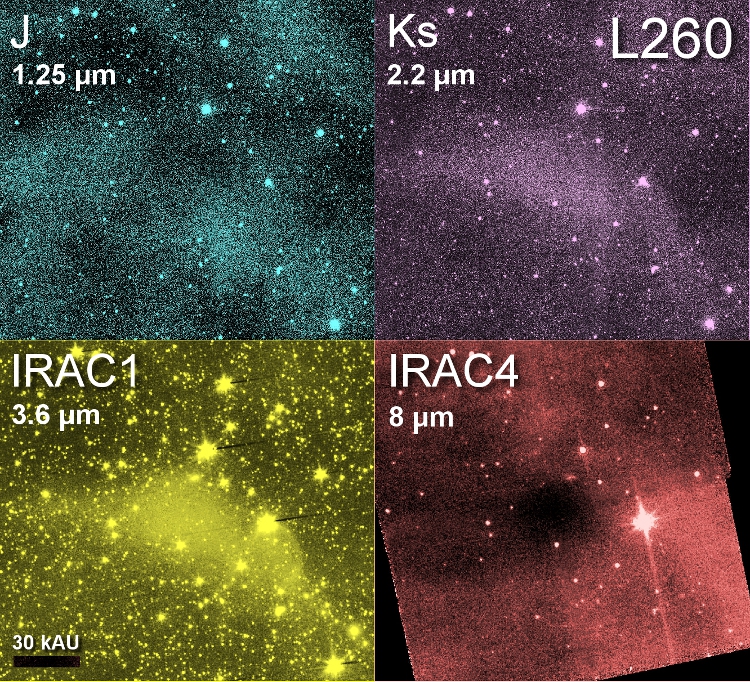| EPoS Contribution |
|
The memory of dust: exploring the core environment history with coreshine
Juergen Steinacker IPAG/MPIA, Grenoble, FR | |
|
The recently found mid-infrared coreshine effect points towards the existence of
a large-size grain population with sizes around 1 micron in molecular cloud
cores. What is the origin of these large grains? Up to now we consider three
possibilities: (1) an ancient origin: before the molecular cloud has assembled supernovae or stellar atmospheres have created the large-size tail with substantial reprocessing in the ISM. (2) a pre-core origin: older density condensations have grown larger grains by turbulent collisions already and released them back into the filament. (3) a core origin: the grains are grown in the core by turbulent collisions. In this contribution, we summarize the partially surprizing findings of our current coreshine modeling and its potential to trace back the core environment evolution by its growth history. Analyzing the interstellar radiation scattered by the grains we find no indication for spatial variations of the grain population across the cores showing the effect like L260. We investigate why only about half of the cores show the effect, and discuss global effects like the combined action of the anisotropic ISRF and the scattering direction function. For the core L1506C we apply detailed coagulation models to find evidence that the core has been denser and/or more turbulent. We will also present detailed radiative transfer modeling of a set of cores observed in two post-cryo Spitzer observing runs, one being the largest Galactic run in the observing cycle 8. | |
 | |
| Caption: NIR and MIR Images of the 1.5 Msolar molecular cloud core L260. While in the J band, only scattered light from the outer core parts is visible, already in the K band the central part of the core dominates the appearance. The extinction profile at 8 μm indicates the column density distribution of the core. Modeling the coreshine from all bands we find the largest grains to have sizes between 1-1.5 μm. | |
| Collaborators: M. Andersen, IPAG, France W.-F. Thi, IPAG, France A. Bacmann, IPAG, France R. Paladini, IPAC, US L. Pagani, Obs Paris, FR Coreshine Team |
Key publication
Suggested Sessions: Cores |

